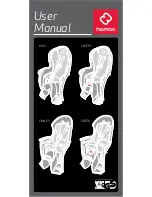
INSTALLATION GUIDE
IP-DECT Base Station and IP-DECT Gateway
4
Installation of the IPBL
This section describes how to install the IPBL.
4.1
Install the IPBL
To keep the same functionality of the system, do not mix different RFPs, Core (KRCNB 201) with
Worf (KRCNB 30x and BS3x0) and DB1, on the same IPBL. The reason this will not work is
prolonged preamle is supported by Worf and DB1 RFPs but not by Core RFPs. When the handset
receive capacity information from the RFPs, including prolonged preamble and multicast, it
assumes that all RFPs are of the same type as the first RFP it receives data from.
Figure 16. Install the IPBL
lan synchronization reference
1 2 ring in ring out in out
base station 01 02 03 04 05 06 07 08
09 10 11 12 13 14 15 16
035
{
{
{
A
B
C
The main steps of the installation is described below:
1.
Install the IPBL in a standard 19’’ rack.
2.
Pin the cables, see
4.2 Pin the IPBL Cable, page 26
3.
Attach the power cable, see
.
4.
Connect the cables in the following order:
− Ethernet cable (A) LAN1 port must be used in the IP-DECT system (LAN2 port is for administration
only). Note: This is not applicable when RSTP is used. For information about RSTP, see the
applicable Installation and Operation Manual for the device.
− Synchronization cable (ring sync, reference sync) (B)
− Base station cable (RFP cable) (C)
The connected RFPs must not be connected to protective earth.
5.
Monitor the total current consumption from the IPBL’s GUI (Graphical User Interface).
For information on how to monitor the total current consumption, see section
Environment
in the
applicable Installation and Operation Manual for the IPBL.
Make sure that the total current consumption does not exceeds the following values:
− Max current consumption is 2,0/1,1 A when supplied with 110/230 VAC.
− Max current consumption is 5,2 A when supplied with 48 VDC.
25
TD 92989EN / 25 January 2021 / Ver. E











































